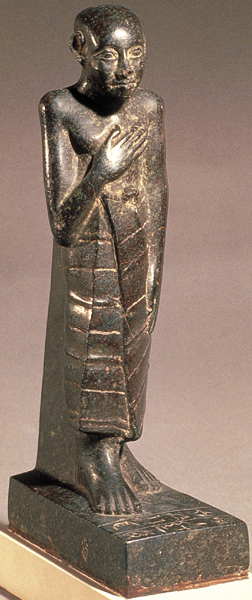Ancient Life: Thinning Out?
Some remedies from the ancient world.

What is it that a man fears most?
Evidence from the ancient world, along with modern Hair Club for Men ads and through-the-roof sales of Rogaine, suggest that for men the real horror of horrors is the receding hairline.
In ancient Egypt, bald was definitely not beautiful. The 9-inch-high figurine above, now in the British Museum, depicts a glossy-headed man leaning gently into late middle age. The statue is from the Middle Kingdom (c. 2133–1786 B.C.). But had the man whose likeness is rendered here lived but a few centuries later, he could have consulted the Ebers Medical Papyrus—a 60-foot-long, 16th-century B.C. Egyptian scroll (now in the Egyptian Museum in Leipzig, Germany) that lists hundreds of cures for various maladies, including baldness.
To repopulate his pate, according to the Ebers papyrus, a gentleman should pound the beans of the castor-oil plant, soak the paste in oil and then massage his skull with the mixture. (Be careful! The bean from the castor-oil plant is poisonous if ingested.) If that doesn’t work, another 16th-century B.C. Egyptian document, the Hearst Papyrus (in the Bancroft Library of the University of California at Berkeley) gives a different remedy: Mix ground wheat, honey and oil, boil the mixture and then apply it to the bald patch.
Already a library member? Log in here.
Institution user? Log in with your IP address.

